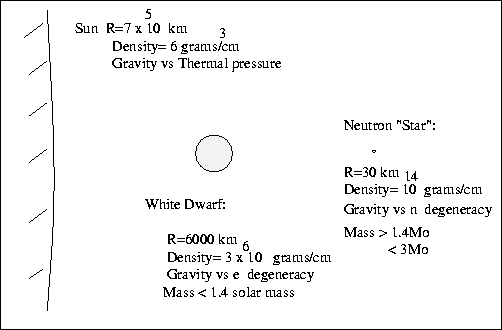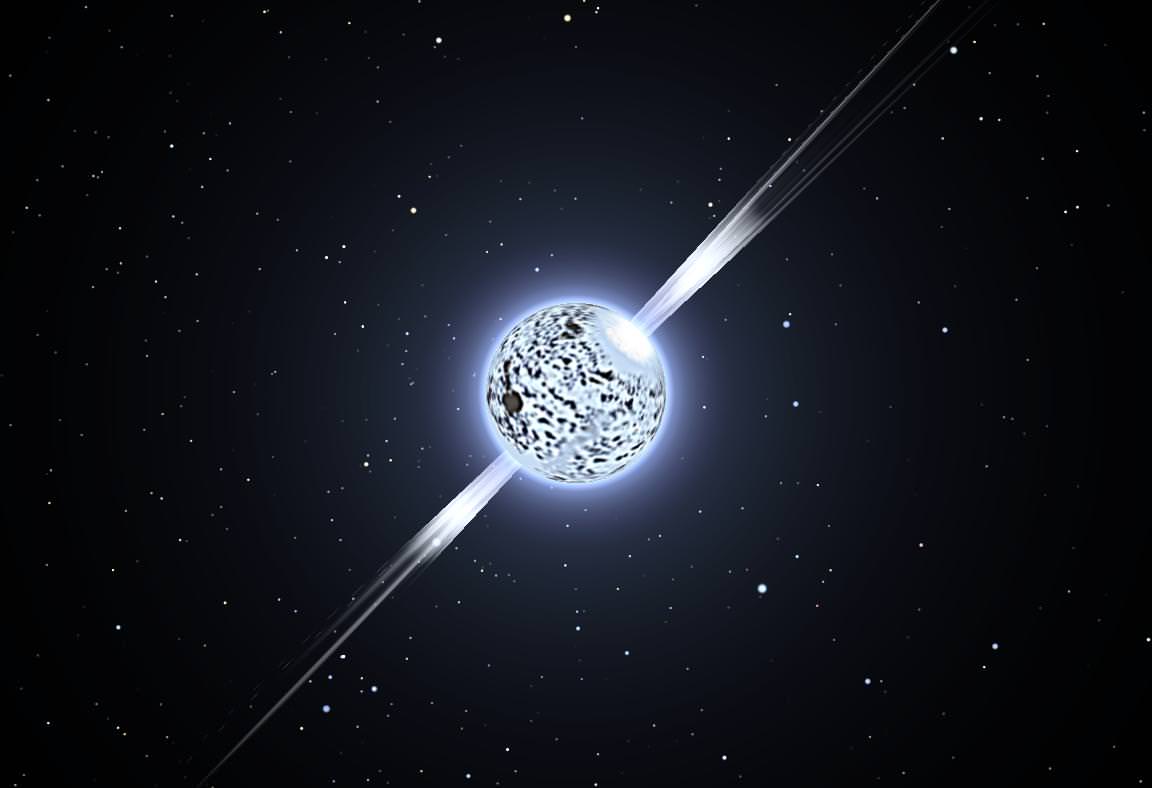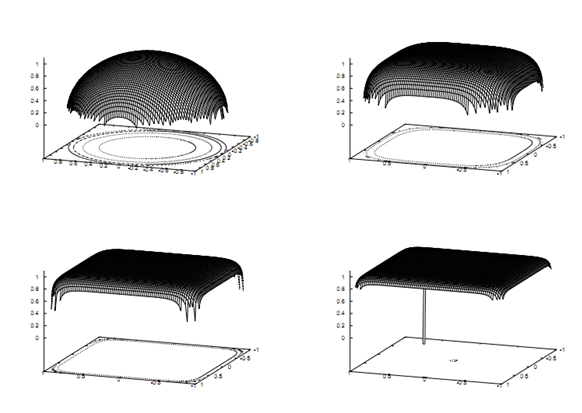TR: Neutrons Become Cubes Inside Neutron Stars
Posted: Wed Aug 17, 2011 3:08 am
Neutrons Become Cubes Inside Neutron Stars
Technology Review | The Physics arXiv Blog | kfc | 2011 Aug 11
Super-Dense Stars May Squash Neutrons Into Cubes
Wired Science | Dave Mosher | 2011 Aug 16
Cubic neutrons - Felipe J. Llanes-Estrada, Gaspar Moreno Navarro
Technology Review | The Physics arXiv Blog | kfc | 2011 Aug 11
Intense pressure can force neutrons into cubes rather than spheres, say physicists
Inside atomic nuclei, protons and neutrons fill space with a packing density of 0.74, meaning that only 26 percent of the volume of the nucleus in is empty.
That's pretty efficient packing. Neutrons achieve a similar density inside neutron stars, where the force holding neutrons together is the only thing that prevents gravity from crushing the star into a black hole.
Today, Felipe Llanes-Estrada at the Technical University of Munich in Germany and Gaspar Moreno Navarro at Complutense University in Madrid, Spain, say neutrons can do even better.
These guys have calculated that under intense pressure, neutrons can switch from a spherical symmetry to a cubic one. And when that happens, neutrons pack like cubes into crystals with a packing density that approaches 100%.
Anyone wondering where such a form of matter might exist would naturally think if the centre of neutron stars. But there's a problem.
On the one hand, most neutron stars have a mass about 1.4 times that of the Sun, which is too small to generate the required pressures for cubic neutrons. On the other, stars much bigger than two solar masses collapse to form black holes.
That doesn't leave much of a mass range in which cubic neutrons can form.
As luck would have it, however, last year astronomers discovered in the constellation of Scorpius the most massive neutron star ever seen. This object, called PSR J1614-2230, has a mass 1.97 times that of the Sun.
That's about as large as theory allows (in fact its mere existence rules out various theories about the behaviour of mass at high densities). But PSR J1614-2230 is massive enough to allow the existence of cubic neutrons.
Astrophysicists will be rubbing their hands at the prospect. The change from spherical to cubic neutrons should have a big influence on the behaviour a neutron star. It would change the star's density, it's stiffness and its rate of rotation, among other things.
So astronomers will be getting their lens cloths out and polishing furiously in the hope of observing this entirely new form of matter in the distant reaches of the galaxy.
Super-Dense Stars May Squash Neutrons Into Cubes
Wired Science | Dave Mosher | 2011 Aug 16
Deep inside the super-dense hearts of exploding stars, gravity may squash neutron particles from spheres into cubes.
The idea could mean that neutron stars, as researchers call the stellar corpses, are denser than anyone expected. It could also question what stops them from collapsing into black holes and out of existence.
“If you take this result purely at face value, it means neutron stars are in trouble. They should collapse into black holes at lower masses,” said theoretical physicist Felipe Jose Llanes-Estrada of Complutense University of Madrid, co-author of a study published Aug. 9 on the prepublication server arXiv.
“But that’s not what we observe. It’s possible there’s an additional repulsive interaction [between neutrons] to counter a collapse that we just haven’t thought of yet.”
A star between nine and 20 times the sun’s mass detonates as a supernova toward the end of its life. At that weight, a star isn’t heavy enough to create a critical, ultra-dense state and shrink into a black hole. Instead, it collapses into a sphere no bigger than 15 miles wide and so dense that a single teaspoon of it weighs as much as everyone on Earth, multiplied by 18.
Late last year, astronomers discovered the biggest-ever neutron star, called J1614-2230, that weighed in at 1.97 times the sun’s mass. Prior to its discovery, the most massive neutron weighed 1.67 solar masses.
The find left more than a few astrophysicists scratching their heads. Its existence ruled out some models of neutron stars that relied on exotic forms of matter to explain why they didn’t collapse farther, and instead supported models of neutron stars as containing only neutrons and protons.
When Llanes-Estrad and his university colleague Gaspar Moreno Navarro heard of J1614-2230, they wanted to know what might be happening inside of it.
The duo knew of a model from the 1970s suggesting pure neutrons could form a crystal lattice under incredible pressure (similar to how carbon forms diamonds in the bowels of the Earth). When they tweaked a familiar computer model to incorporate the idea, they discovered that — at the pressures anticipated deep in neutron stars — neutrons deformed from spheres into cubes.
“There’s an optimum packing density with spheres, including neutrons. It’s about 74 percent. No matter how efficiently you arrange them, like oranges on display at a supermarket, there’s always space in between,” Llanes-Estrada said. “If you want to be most efficient, you distort the oranges. Pack them a mile high and squish the ones on the bottom.”
Gravity shapes aggregate particles of matter into the simplest, most efficiently-packed object possible, normally a sphere like the Earth. The particles themselves, though, remain individually unaffected; gravity is too weak to overcome the strong interactions that hold neutrons and other particles together. But if gravity becomes intense enough, it might overpower the interactions.
So deep within a neutron star, a neutron’s most efficient shape may be a cube. “They’ll be flattened on all sides, like dice,” Llanes-Estrada said.
So far, the response to their study has proven lukewarm.
Particle physicist Richard Hill of the University of Chicago, for example, noted the study looks at a neutron in isolation, not in aggregate.
“It’s an interesting idea, but what happens among the neutrons isn’t clear,” said Hill, who wasn’t involved in the study. At the densities in neutron stars, he noted, the “identities of individual neutrons may be blurred out.”
Llanes-Estrada acknowledged the criticism, which a second physicist who wished to remain anonymous also shared. But Llanes-Estrada said that pushing boundaries was, in part, the point.
“I think there is a large uncertainty of what happens to neutrons at very high compressions,” he said. “I think we should keep studying all of the possibilities.”
Cubic neutrons - Felipe J. Llanes-Estrada, Gaspar Moreno Navarro
- arXiv.org > nucl-th > arXiv:1108.1859 > 09 Aug 2011







